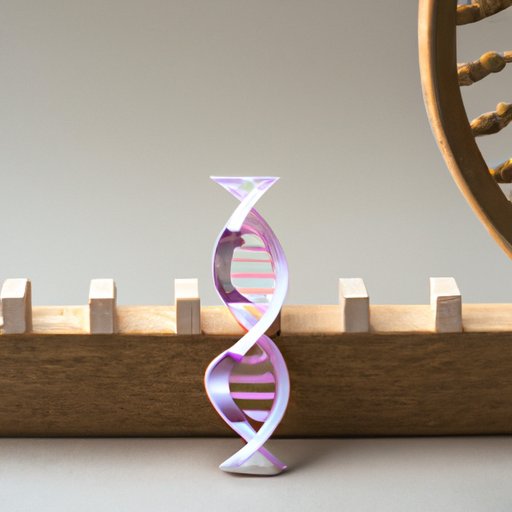Introduction
DNA technology has become increasingly popular in recent years, with applications ranging from medical diagnoses and treatments to forensic analysis and criminal investigations. DNA technology is based on the genetic material that makes up an individual’s unique genetic code. By analyzing this genetic material, scientists can better understand a person’s health, ancestry, and other characteristics. While there are many potential benefits to using DNA technology, there are also several disadvantages that should be considered before implementing it.

Potential for Misuse and Abuse of DNA Technology
One of the most significant disadvantages of using DNA technology is the potential for misuse and abuse. For example, some companies have used DNA testing to discriminate against employees or applicants based on their genetic information. Additionally, some law enforcement agencies have used DNA testing as a form of surveillance, collecting and storing samples from people who were not suspected of any crime. These practices raise serious ethical questions about the use of DNA technology and its potential implications for privacy and civil liberties.
The misuse and abuse of DNA technology can also have serious legal consequences. In the United States, for example, individuals found guilty of misusing or abusing DNA technology can face fines and even prison time. In addition, victims of misuse or abuse could file lawsuits against those responsible for violating their rights.

Possible Ethical Concerns Surrounding the Use of DNA Technology
Another disadvantage of using DNA technology is the potential ethical concerns surrounding its use. One of the most significant ethical issues is the potential for privacy violations. DNA technology allows researchers and law enforcement to collect and store large amounts of personal genetic data, which can then be used to identify individuals or family members. This raises significant concerns about how this data will be used and who will have access to it.
In addition, there is the potential for discrimination based on genetic information. For example, some employers may use DNA testing to determine whether an applicant has a predisposition to certain medical conditions, or to assess their risk for developing certain diseases. This type of testing raises serious ethical questions about the implications for personal autonomy and civil liberties.
Cost of Implementing DNA Technology
Another disadvantage of using DNA technology is the cost of implementing and maintaining the necessary equipment and software. Depending on the type of system being used, the upfront costs can be quite high, and there are also ongoing maintenance expenses associated with maintaining the system. Additionally, if the system is not properly maintained, there is a risk of data breaches or other security issues that can result in costly losses.

Risk of Data Breaches and Security Issues
Data breaches are one of the biggest risks associated with using DNA technology. For example, in 2018 hackers gained access to the genetic data of more than two million customers of a major genealogy company. This type of breach can have serious implications for both individuals and organizations, including identity theft, financial loss, and reputational damage.
To reduce the risk of data breaches, organizations should invest in strong security measures such as encryption, multi-factor authentication, and regular security audits. Additionally, organizations should ensure that all staff members handling genetic data are adequately trained and follow proper security protocols.
Difficulty in Verifying Accuracy and Reliability of Results
Another disadvantage of using DNA technology is the difficulty in verifying the accuracy and reliability of results. DNA tests can often produce false positives or false negatives, which can lead to incorrect diagnoses or treatments. Additionally, different laboratories may use different methods or techniques, which can lead to discrepancies in results.
To improve the accuracy and reliability of results, organizations should implement quality assurance protocols and regularly monitor the performance of their tests. Additionally, organizations should ensure that their personnel are properly trained and adhere to industry standards when performing tests.
Lack of Regulation and Oversight of DNA Technology
Finally, another disadvantage of using DNA technology is the lack of regulation and oversight. Currently, there are few laws governing the use of DNA technology, and even fewer regulations in place to ensure that organizations are using it responsibly. Without proper oversight, there is a greater risk of misuse or abuse of the technology, which can have serious implications for individuals and society as a whole.
Conclusion
DNA technology has many potential benefits, but it also comes with several potential disadvantages. These include the potential for misuse and abuse, ethical concerns, cost, security issues, difficulty in verifying accuracy and reliability of results, and lack of regulation and oversight. To address these disadvantages, organizations should invest in strong security measures, ensure that personnel are properly trained, and implement quality assurance protocols. Additionally, governments should consider enacting laws and regulations to ensure the responsible use of DNA technology.
(Note: Is this article not meeting your expectations? Do you have knowledge or insights to share? Unlock new opportunities and expand your reach by joining our authors team. Click Registration to join us and share your expertise with our readers.)
